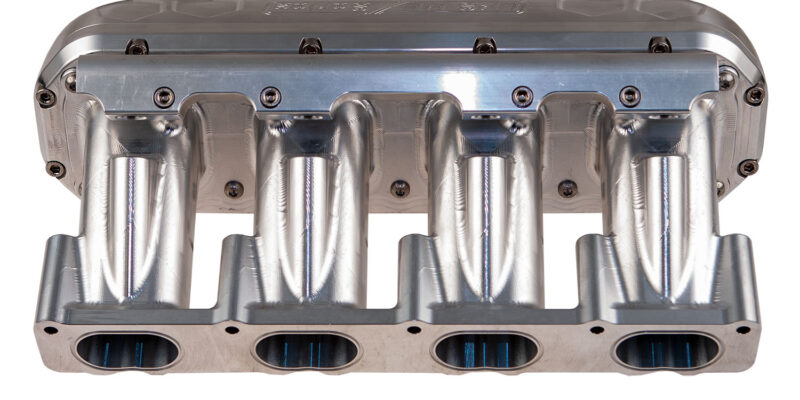
In the dynamic world of automotive engineering, constant innovation propels performance to new heights. One such marvel in the realm of high-performance engines is the K-Series Billet Intake Manifold. This cutting-edge technology has become a game-changer, revolutionizing the way engines breathe and function. In this deep dive, we’ll unravel the intricacies of K-Series Billet Intake Manifold technology, exploring its design, functionality, and the impact it has on overall engine performance.
The Evolution of Intake Manifolds
Before delving into the specifics of K-Series Billet Intake Manifolds, it’s crucial to understand the role of intake manifolds in an internal combustion engine. The intake manifold serves as the gateway for air to enter the engine cylinders, where it mixes with fuel for combustion. Over the years, various designs have emerged, each aiming to optimize airflow and enhance engine efficiency.
The K-Series Billet Intake Manifold is a product of evolutionary engineering, building upon the foundations laid by its predecessors. Unlike traditional cast iron or aluminum intake manifolds, the billet version leverages advanced manufacturing techniques to achieve unparalleled precision and performance.
Billet Manufacturing Technology
At the heart of K-Series Billet Intake technology lies the process of billet manufacturing. Unlike traditional casting methods, billet machining involves shaping the manifold from a solid block of high-quality aluminum alloy. This method ensures consistency in material density and eliminates imperfections commonly found in cast components.
The precision afforded by billet machining allows engineers to design intricate internal passages and optimize airflow dynamics. This level of detail is crucial for achieving optimal air distribution to each cylinder, a key factor in maximizing engine efficiency.
Design Considerations
The design of the K-Series Billet Intake is a testament to the marriage of form and function. Engineers meticulously craft the manifold to accommodate the specific needs of high-performance engines. Key design considerations include runner length, plenum volume, and throttle body placement.
1. Runner Length: The length of each intake runner plays a crucial role in optimizing the engine’s powerband. By fine-tuning the length, engineers can manipulate the timing of the intake pulse, enhancing torque at specific RPM ranges.
2. Plenum Volume: The plenum, or the chamber that distributes air to the individual runners, is designed to provide a steady and even flow of air to each cylinder. The billet design allows for precise control over plenum volume, ensuring a balance between low-end torque and high-end power.
3. Throttle Body Placement: The placement of the throttle body is strategically determined to minimize turbulence and pressure drops. This careful positioning contributes to smoother airflow and improved throttle response.
Performance Benefits
The adoption of K-Series Billet Intake Manifold technology translates into a host of performance benefits for the engine. Here are some key advantages that enthusiasts and racers can expect:
1. Increased Horsepower: The precision machining of the billet manifold, coupled with optimized airflow dynamics, results in a noticeable increase in horsepower. This enhanced power output is particularly beneficial for racing applications where every bit of performance matters.
2. Improved Throttle Response: Thanks to the meticulous design and reduced air turbulence, engines equipped with K-Series Billet Intake exhibit improved throttle response. This instantaneous reaction to driver input enhances the overall driving experience, making the vehicle more responsive and agile.
3. Enhanced Torque Curve: Fine-tuning the intake manifold design allows engineers to tailor the torque curve to meet specific performance goals. This versatility is particularly advantageous for applications such as drifting, where a broad and predictable torque curve is essential for precise control.
4. Optimized Air-Fuel Ratio: The precise control over airflow provided by billet machining ensures an optimized air-fuel ratio. This is critical for achieving efficient combustion and, consequently, maximizing fuel efficiency and reducing emissions.
Real-World Applications
The impact of K-Series Billet Intake Manifold technology extends beyond the realm of high-performance enthusiasts. Automotive manufacturers and professional racing teams alike are integrating this technology into their vehicles for a competitive edge.
1. Motorsports: In the world of motorsports, where every fraction of a second counts, K-Series Billet Intake have become a staple for race cars. The technology’s ability to deliver consistent power and response under extreme conditions makes it indispensable for professional racing teams competing in various disciplines.
2. Aftermarket Performance Upgrades: Enthusiasts seeking to unlock the full potential of their vehicles turn to aftermarket upgrades, and the K-Series Billet Intake Manifold is a popular choice. Whether it’s for street racing, track days, or spirited driving, the improved performance and throttle response make it a sought-after modification.
Conclusion
In conclusion, the K-Series Billet Intake Manifold represents a pinnacle of intake manifold technology, pushing the boundaries of what is achievable in terms of precision and performance. The marriage of billet manufacturing techniques with thoughtful design considerations results in a product that not only enhances engine power but also transforms the driving experience.
As automotive technology continues to evolve, innovations like the K-Series Billet Intake Manifold pave the way for a new era of high-performance engines. Whether you’re a professional racer aiming for the podium or an enthusiast looking to elevate your driving experience, the deep dive into K-Series Billet Intake Manifold technology reveals a world where engineering excellence meets the thrill of the open road.
For More Info: Acura Integra B-Series










